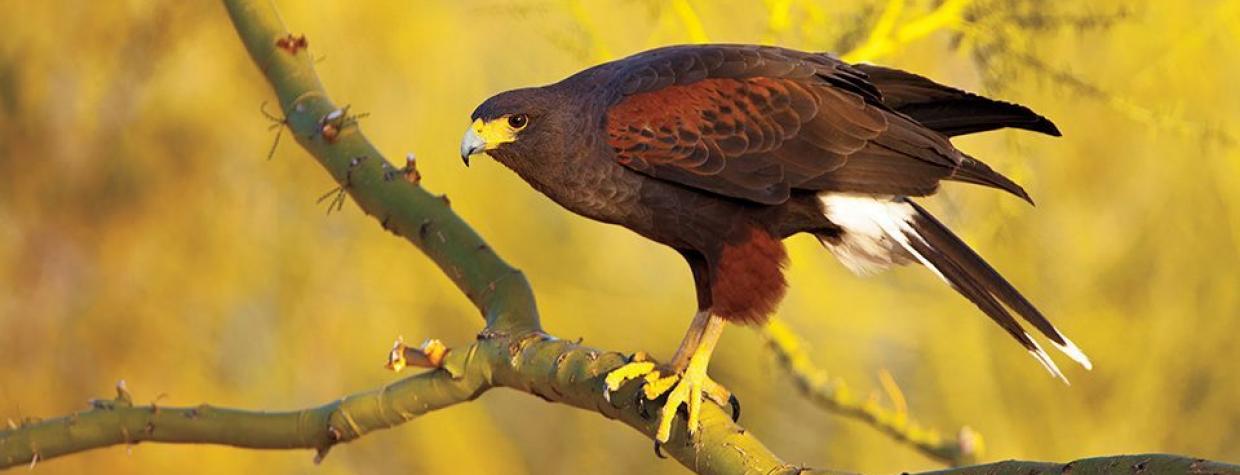Ornithologist and artist John James Audubon named the chocolate-colored Harris' hawk for his friend, fellow ornithologist Edward Harris. Audubon and Harris met in 1824, and the bird enthusiasts embarked on two expeditions together — one to the Gulf of Mexico in 1837, and one along the Missouri River in 1842.
Although you won't find Harris' hawks along the Missouri, they're no strangers to the arid Southwest, nesting in paloverdes, mesquites and saguaros. You'll also find them in savannas and scrub prairies, and their range extends into Central and South America.
Their brown bodies, rust-painted wings and white-tipped tails help the hawks blend in with the scrub, and menacing talons prove dangerous to the birds' prey, which includes jackrabbits and other small mammals, as well as reptiles.
Social by nature, the birds commonly hunt in small groups, with hunters carrying food back to nestlings. Those young hawks, which hatch in sets of two to four, typically leave the nest within 38 days; they can fly in as little as 10 days after that. Though fledglings are free to roam, they typically stay with their extended families for years.

